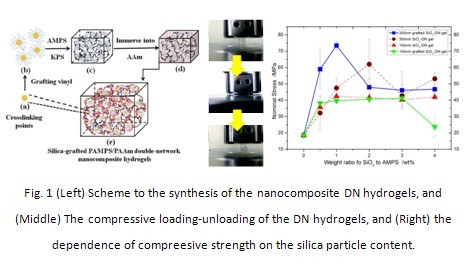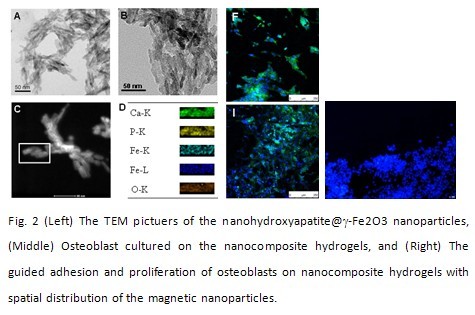Joint disease and trauma are among the worst threats to the human beings. Joint replacement and/or tissue engineering have been widely used to replace, repair, or regenerate the tissue defect, which, although promising, remains challenging. The osteochondral cartilage is a well-organized natural hydrogel with highly ordered structures along the normal to the cartilage surface, which provides extraordinary lubrication, wear resistance, and compressive toughness. Synthetic hydrogels with water content similar to cartilage (60-80%) can be bioactive, but substantial improvement of their strength and toughness is usually needed to bear the load. Double network (DN) hydrogels have been emerging as a family of synthetic biomimetic materials with compressive strength up to 17MPa and fracture strain up to 90%, which is believed as candidates for permanent joint plugs for pain relief. However, it is necessary to further improve the compressive toughness and creeping, etc.
The Biomedical Polymer Material (BPM) Group advanced an idea of compositing such DN hydrogels with nanoparticles to achieve nanocomposite hydrogels with improved strength and toughness. Surface-modified silica nanoparticles were used to polymerize with the first monomer, generating a composite network with both mobile crosslinks and immobile macro-crosslinks. After the second network was introduced into the first one, the nanocomposite DN hydrogels showed a compressive strength as high as 73MPa, while no hydrogels fractured with a compressive strain up to 98% (Fig 1). Such super tough hydrogels may find applications in joint replacement and repair. This work has been reported on Soft Matter 2012, 8, 6048-6056 of the Royal Society of Chemistry.
Compositing polymer hydrogels with bioactive and/or biofunctional nanomaterials has been widely used to tailor the biofunctionality of the materials and manipulate the structures and functionalities of the materials. The BPM group at NIMTE synthesized nanohydroxyapatite-coated -Fe2O3 nanoparticles and successfully manipulated the spatial distribution of these magnetic nanoparticles throughout the polymer hydrogels by applying magnetic field. Results demonstrated that the magnetic nanocomposites showed improved osteo-conducive activity in comparison to the nanohydroxyapatite. The spatial distribution of the magnetic nanoparticles in the hydrogels induced gradient adhesion and proliferation of human osteoblasts (Fig 2).
This study is believed to inspire new ideas on the design and construction of biomimetic polymer materials to regulate the spatial adhesion and proliferation of cells on tissue engineering scaffolds.
This study was funded by the NSFC, the Ningbo NSF, and the Director Foundation of NIMTE.


Images by NIMTE
Professor Jun Fu fujun@nimte.ac.cn

